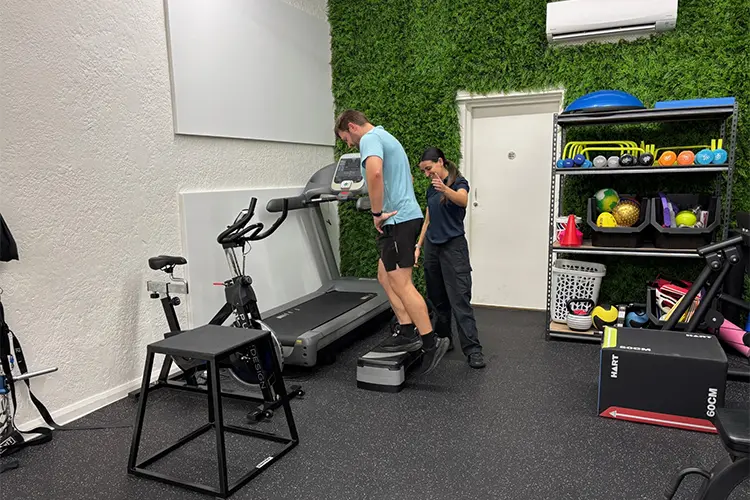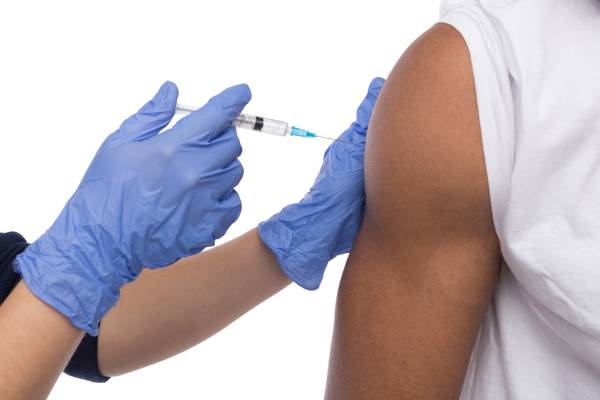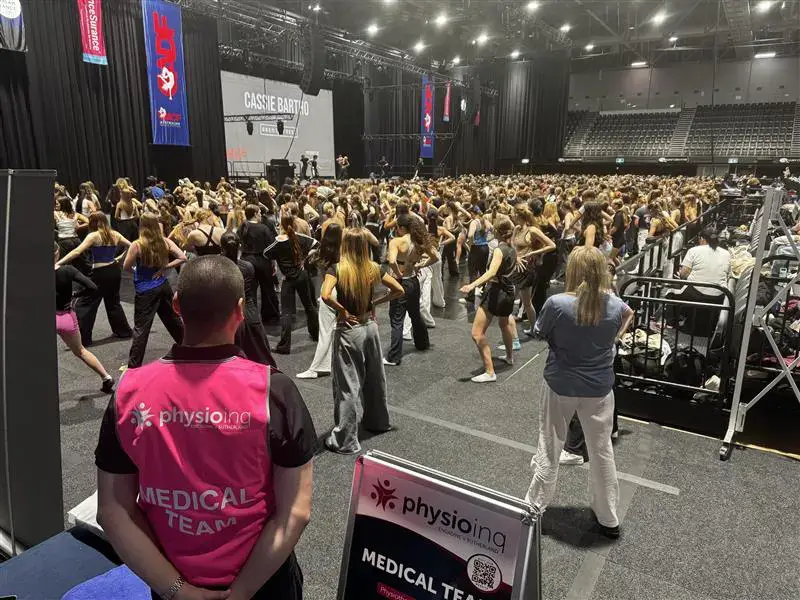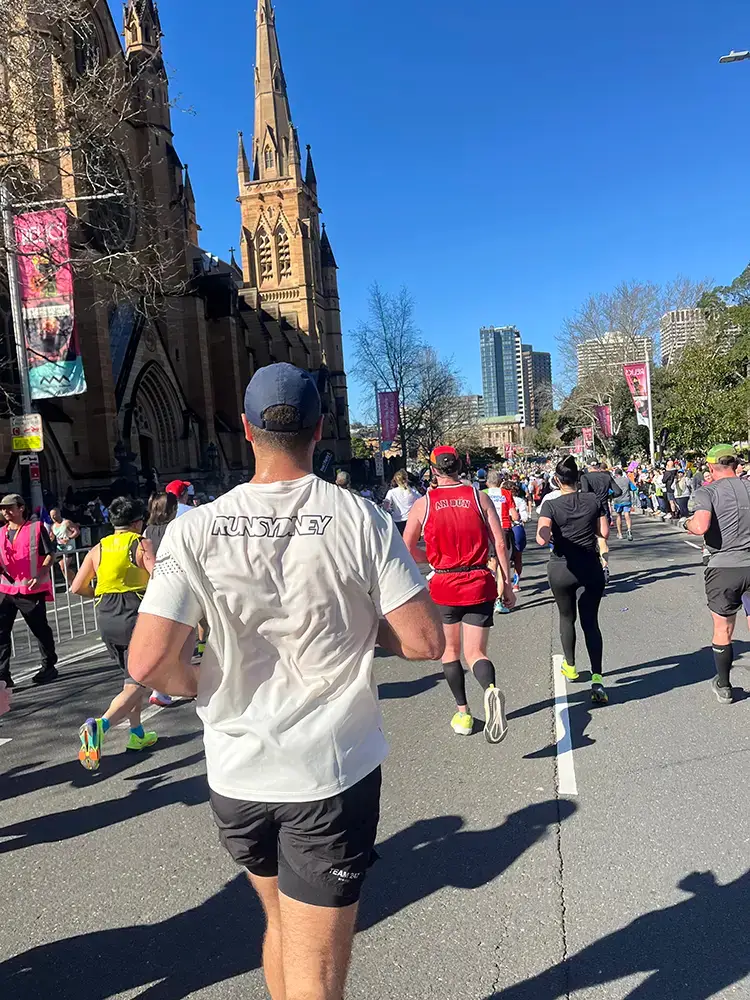If you’ve felt a sharp twinge in your calf during sport, or a lingering tightness that won’t settle, you’re not alone. Calf strains are one of the most common injuries in field sports like soccer, football, and netball, especially during sudden sprints, take-offs, or changes in direction.
At Physio Club Engadine and Sutherland, we often see athletes who think they’ve torn their calf, but the right diagnosis, and knowing whether it’s the soleus (lower calf) or gastrocnemius (upper calf) muscle that has been injured, makes a big difference in recovery and preventing re-injury.
🧠 Understanding the Calf Muscles
Your calf is made up of three muscles:
- Gastrocnemius (the fleshy, outer, two-headed muscle, crossing knee and ankle)
- Soleus (the deeper muscle that lies under the gastrocnemius)
- Plantaris (a small accessory muscle)
🧠 How do you Injure a Calf Muscle?
Gastrocnemius strains often happen during explosive movements – think sprinting, jumping, or sudden acceleration.
Soleus strains are more common in endurance or middle-aged athletes – think overuse or fatigue.
⚡ What Does a Calf Strain Feel Like?
Gastrocnemius strain:
- Sudden sharp pain, sometimes described as a ‘snap’ or ‘pop’
- Pain and swelling appear quickly
- Immediate difficulty pushing off or rising onto your toes
Soleus strain:
- Tightness and stiffness building over days or weeks
- Mild swelling and discomfort
- Often aggravated by steady running or prolonged activity
You may also notice:
- Tenderness or bruising in the calf
- Stiffness when walking
- Pain with heel raises or calf stretches
Calf strains are typically graded:
- Mild (strain) – sharp pain during or after activity
- Moderate (partial tear) – pain limits your ability to keep playing
- Severe (complete tear) – sudden severe pain between the Achilles tendon and mid-calf
🧪 How We Diagnose the Difference
| Test | Soleus | Gastrocnemius |
| Tenderness | Deep, under gastroc | Surface, more obvious |
| Common injury site | Lateral calf (outer) | Medial calf (inner) |
| Knee-to-wall test | Pain when knee is bent | Pain when knee is straight |
| Resisted movement | Pain with bent-knee plantarflexion | Pain with straight-knee plantarflexion |
| Heel raise | Hard with bent knee | Hard with straight knee |
The above tests help pinpoint which muscle is involved and how severe it is. This is critical for getting your rehab right.
🩺 What is the Treatment for Calf Strains?
Early management (first 3–5 days):
- Rest and avoid stretching or contracting the muscle
- Ice and compression to reduce bleeding and swelling
- Elevation to manage inflammation
Rehabilitation phase (depends on the severity of tear, as below):
- Guided strength and mobility exercises
- Soft tissue therapy and dry needling
- Gradual loading of the muscle
- Plyometric and sport-specific drills to prepare for return to play
The gold standard treatment for calf strains — whether soleus or gastrocnemius — is a structured physiotherapy program.
How long does a Calf Muscle Tear take to Heal?
Grade 1 (mild) – About 2 weeks
Grade 2 (moderate) = About 5-8 weeks
Grade 3 (severe) – About 3-6 months or more
🛡️ Preventing Future Calf Strains
- Warm up properly before training or games
- Address any calf tightness early
- Include strength and mobility work in your routine
- Use a foam roller or massage gun for maintenance
🏆 The Physio Club Approach
Whether you play soccer, netball, rugby, or football, our team at Physio Club Engadine and Sutherland will:
- Accurately diagnose your calf injury
- Provide hands-on treatment and a tailored rehab plan
- Guide your return to sport with confidence
Don’t let calf pain sideline your season. Get the right diagnosis and a plan that works.
Book your calf assessment today at Physio Club Engadine or Sutherland.




